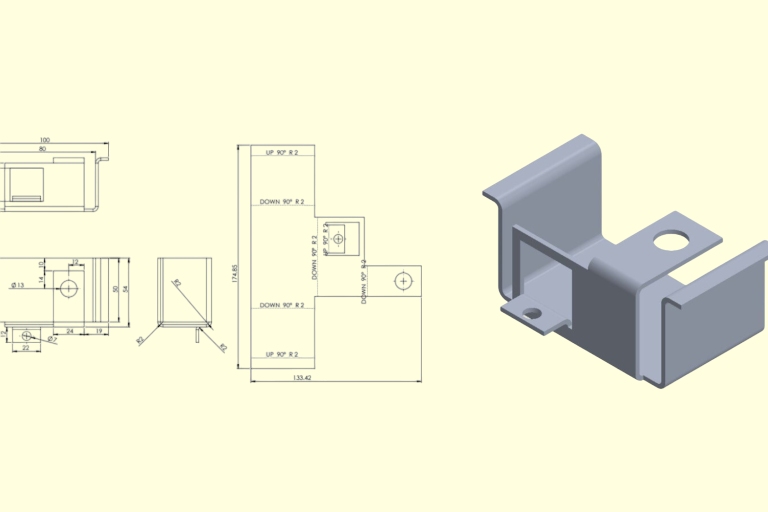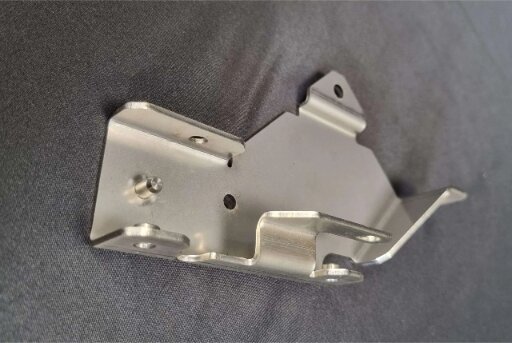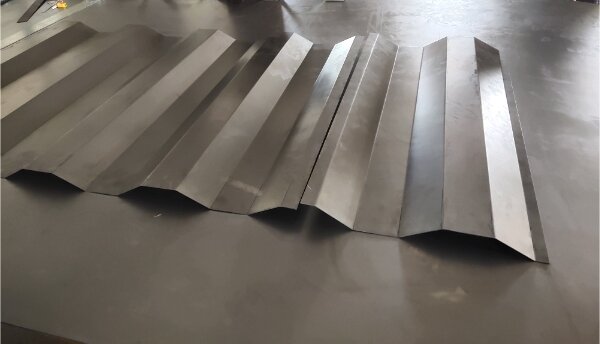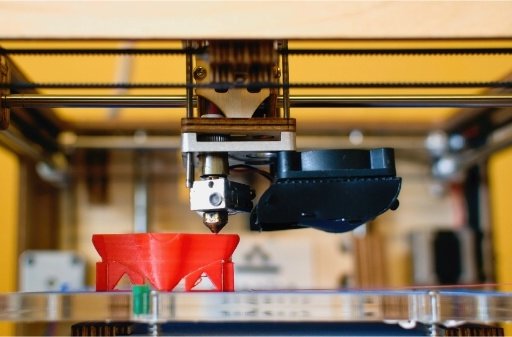لطالما كان النحاس الأصفر مادة شائعة منذ قرون، حيث يتميز بمتانته ولونه الذهبي الدافئ. ولكن عندما يتعلق الأمر بالمعالجات السطحية، فإن النحاس المصقول يبرز النحاس المصقول. تعمل هذه التقنية على تحويل النحاس العادي إلى مادة متطورة ذات مظهر فريد غير لامع.
النحاس الأصفر المصقول هو نوع من المعالجة السطحية يوضع على معدن النحاس الأصفر. يتم إنشاؤه عن طريق فرك سطح النحاس الأصفر بمواد كاشطة بنمط خطي. تزيل هذه العملية طبقة رقيقة من المعدن، تاركةً وراءها خطوطاً دقيقة تضفي على النحاس النحاسي لمعاناً خافتاً يشبه الساتان.
يكمن جمال النحاس المصقول في تعدد استخداماته. فهو يوفر توازنًا مثاليًا بين اللمسات النهائية المصقولة وغير اللامعة، مما يجعله مناسبًا لمختلف الاستخدامات. دعنا نستكشف هذه المادة الرائعة بمزيد من التفاصيل.

خصائص النحاس النحاسي المصقول
تعريف وعملية التنظيف بالفرشاة
تنطوي عملية التنظيف بالفرشاة على استخدام مواد كاشطة دقيقة أو فراشي سلكية لإنشاء أخاديد مجهرية على سطح النحاس. تعمل هذه الأخاديد في اتجاه موحد، وعادةً ما تكون موازية لأطول بُعد للقطعة. والنتيجة هي ملمس فريد من نوعه ينشر الضوء ويخلق مظهراً ناعماً وهادئاً.
جاذبية بصرية: اللون والملمس
يتميز النحاس الأصفر المصقول بلون ذهبي دافئ مع لمعان خافت. يتميز سطحه بنسيج خطي ناعم يسلط الضوء بطرق مثيرة للاهتمام. تقلل هذه اللمسة النهائية من الوهج وبصمات الأصابع، مما يجعلها مثالية للأسطح التي يتم لمسها بشكل متكرر.
المتانة ومقاومة التآكل
يشتهر النحاس الأصفر المصقول بمتانته. تخلق عملية الفرشاة سطحاً أكثر خشونة قليلاً، مما يساعد على إخفاء الخدوش والتآكل الطفيف. في حين أن النحاس الأصفر يشكل بطبيعة الحال طبقة واقية مع مرور الوقت، إلا أن الطلاء المصقول يمكن أن يعزز مقاومته للتآكل.
عملية تصنيع النحاس النحاسي المصقول
المواد المستخدمة في النحاس النحاسي المصقول
يبدأ النحاس المصقول المصقول من سبيكة نحاس نحاسية قياسية، تتكون عادةً من النحاس والزنك. وتختلف النسبة الدقيقة، لكن السبائك الشائعة تشمل النحاس 70% والزنك 30%. تضيف بعض الشركات المصنعة كميات صغيرة من معادن أخرى، مثل الرصاص أو النيكل، لتعزيز خصائص معينة. يؤثر اختيار السبيكة على اللون النهائي ومتانة الطلاء المصقول.
كيف تنظف النحاس بالفرشاة؟
يتطلب إنشاء طبقة نهائية مصقولة على النحاس الأصفر الدقة والأدوات المناسبة. ابدأ بتنظيف السطح النحاسي جيداً باستخدام مزيل الشحوم لإزالة أي زيوت أو ملوثات. وللحصول على أفضل النتائج، استخدم منظف نحاسي تتراوح درجة حموضته بين 6 و8 لتجنب إتلاف المعدن.
بعد ذلك، اختر المادة الكاشطة. للحصول على لمسة نهائية ناعمة، استخدم ورق صنفرة 320 حبة أو فرشاة سلكية بشعيرات قطرها 0.003 بوصة. وللحصول على ملمس أكثر وضوحاً، اختر ورق صنفرة بحبيبات 220 أو فرشاة سلكية بشعيرات بقطر 0.005 بوصة. ابدأ بتنظيف النحاس بالفرشاة بضربات مستقيمة ومتساوية، مع الحفاظ على زاوية ثابتة تتراوح بين 15 و20 درجة تقريباً على السطح.
عند استخدام الأدوات الكهربائية، يعمل المثقاب ذو السرعة المتغيرة الذي يتراوح بين 1000 و3000 دورة في الدقيقة بشكل جيد لمعظم التطبيقات. استخدم ضغط ثابت يبلغ حوالي 2-3 رطل لكل بوصة مربعة لضمان خطوط موحدة. قم بعمل تمريرات في اتجاه واحد، مع تداخل كل شوط بحوالي 50% لضمان التساوي.
بعد التنظيف بالفرشاة، نظف السطح مرة أخرى لإزالة الجزيئات المعدنية. استخدم الهواء المضغوط بقوة 30-40 PSI أو قطعة قماش خالية من الوبر مبللة بكحول الأيزوبروبيل. للحماية، توضع طبقة رقيقة من الطلاء الشفاف بمحتوى صلب 20-25% للحفاظ على الطلاء دون تغيير مظهره.
أنواع التشطيبات النحاسية
كل طلاء نحاسي يضفي مظهراً مميزاً ويخدم أغراضاً مختلفة. دعنا نستكشف الأنواع الرئيسية وخصائصها.
مقارنة بين الطلاء النهائي المصقول مقابل الطلاء النهائي المصقول
لمسة نهائية مصقولة
- مظهر: حبيبات دقيقة وموجّهة
- صيانة: منخفض، يخفي بصمات الأصابع بشكل جيد
- الأفضل لـ تصاميم عصرية وصناعية
- متانة: عالية، تخفي الخدوش الطفيفة
- انعكاس الضوء: الحد الأدنى من الوهج
- مظهر: تشبه المرآة، شديدة اللمعان
- صيانة: عالية، تظهر بصمات الأصابع بسهولة
- الأفضل لـ تصاميم تقليدية فاخرة
- متانة: متوسطة، الخدوش مرئية
- انعكاس الضوء: الانعكاسية القصوى
تشطيبات نحاسية أخرى: غير لامع وغير لامع والمزيد
لمسة نهائية غير لامعة
- ينشئ سطحاً مسطحاً غير عاكس
- ممتازة للتصميمات البسيطة
- تتطلب الحد الأدنى من الصيانة
- شائع في العمارة المعاصرة
- حل وسط بين المصقول وغير اللامع
- لمعان ناعم بدون خطوط حبيبات واضحة
- توازن جيد بين التطبيق العملي والجمالية
- غالباً ما تستخدم في المشاريع السكنية الراقية
تشطيب مطروق
- سطح مزخرف مع مسافات بادئة صغيرة
- يخفي العيوب بشكل فعال
- يضيف اهتمامًا وعمقًا بصريًا
- شائع في عناصر الزينة
تشطيبات عتيقة
- سُمِّر كيميائياً لإضفاء مظهر قديم
- يختلف اللون من البني الداكن إلى الأسود
- صيانة منخفضة
- شائع في مشاريع الترميم
أنواع التشطيبات النحاسية: مقارنة سريعة
| نوع التشطيب | مظهر | رؤية بصمة الإصبع | انعكاس الضوء | أفضل التطبيقات | التكلفة النسبية | متانة |
|---|---|---|---|---|---|---|
| فرشاة | خطوط الحبوب الاتجاهية | قليل | الحد الأدنى | التركيبات والأجهزة الحديثة | متوسط | عالي |
| مصقول | لمعان يشبه المرآة | عالي | الحد الأقصى | ديكور فاخر، زخارف فاخرة | عالي | متوسط |
| مادة | مسطحة وغير عاكسة | منخفضة جداً | لا يوجد | تصميم معاصر | قليل | عالي |
| ساتان | لمعان ناعم | متوسط | دقة | استخدام متعدد الاستخدامات | متوسط | عالي |
| مطروق | مزخرف ومخملي | منخفضة جداً | منتشر | قطع الديكور | عالي | عالية جداً |
| عتيق | مظهر غامق ومعتق | قليل | الحد الأدنى | مشاريع الترميم | متوسط | متوسط |
تطبيقات النحاس النحاسي المصقول
يستخدم النحاس المصقول المصقول في عدد لا يحصى من التطبيقات في مختلف الصناعات. فهو يجمع بين الجمالية والمتانة مما يجعله الخيار الأفضل للمصممين والمهندسين على حد سواء.
ديكور المنزل: التركيبات والأجهزة
تطبيقات المطبخ:
- الحنفيات
- أجهزة الخزانة
- المغاسل
عناصر الحمام:
- تجهيزات الاستحمام
- قضبان وخطافات المناشف
- إطارات المرايا
إضاءة:
- مصابيح معلقة
- شمعدانات الحائط
- الثريات
- مكونات إضاءة المسار
الاستخدامات الصناعية: الآلات والمعدات
معدات التصنيع:
- لوحات التحكم
- حراس السلامة
- المقابض والرافعات
- زخارف زخرفية
تجهيز الأغذية:
- معدات الخلط
- صهاريج التخزين
- أنابيب النقل
- التجهيزات الصحية
أجهزة طبية:
- الأدوات الجراحية
- علب المعدات
- تجهيزات غرفة العمليات
- أجهزة المختبر
نحاس مصقول بلمسة نهائية مصقولة: الإيجابيات والسلبيات
غالباً ما يزن المصممون والمهندسون خياراتهم عند اختيار المواد والتشطيبات. فيما يلي نظرة تفصيلية على مزايا وعيوب النحاس المصقول.
الايجابيات
الفوائد الجمالية
جاذبية خالدة
- مظهر متطور
- تتقدم في العمر برشاقة
- يكمل مختلف الأنماط
الاتساق البصري
- المظهر الموحد
- الحد الأدنى من التباين في الألوان
- تشطيب احترافي
التفاعل الضوئي
- يقلل من الوهج
- إبرازات بارزة خفية
- يضيف عمقاً إلى الأسطح
المزايا العملية
متانة
- يقاوم التآكل اليومي
- يحافظ على مظهره مع مرور الوقت
- يتحمل الاستخدام المنتظم
صيانة
- يخفي بصمات الأصابع
- يخفي الخدوش الطفيفة
- سهلة التنظيف
براعه
- يناسب الاستخدام الداخلي والخارجي
- يعمل في تطبيقات مختلفة
- يتناسب بشكل جيد مع المواد الأخرى
سلبيات
القيود الجمالية
قيود الألوان
- تقتصر على النغمات النحاسية
- لا يمكن تحقيق مظهر معين
- قد لا يناسب جميع التصاميم
اختلافات النهاية
- الاختلافات من دفعة إلى أخرى
- رؤية الحبوب الاتجاهية
- احتمالية التآكل غير المتساوي
التحديات العملية
عوامل التكلفة
- استثمار أولي أعلى
- أدوات الصيانة المتخصصة
- عمالة ماهرة للتركيب
اعتبارات الوقت
- أوقات إنتاج أطول
- المهل الزمنية الممتدة
- عملية إصلاح معقدة
العوامل البيئية
- يمكن أن يبهت مع مرور الوقت
- تتأثر بمواد كيميائية معينة
- قد تظهر عليه بقع مائية

العناية بالنحاس النحاسي المصقول وصيانته
نصائح التنظيف لطول العمر الافتراضي
العناية المناسبة تحافظ على مظهر النحاس المصقول في أفضل حالاته. للتنظيف الروتيني، استخدم قطعة قماش ناعمة ورطبة لمسح الغبار وبصمات الأصابع. تجنب المنظفات الكاشطة أو المواد الخشنة التي قد تخدش السطح. للبقع القاسية، اخلط صابون خفيف مع الماء الدافئ ونظف النحاس برفق. جفف السطح دائماً بعد التنظيف جيداً لمنع البقع المائية.
التدابير الوقائية ضد التشويه
يبهت النحاس بشكل طبيعي مع مرور الوقت، ولكن يمكنك إبطاء هذه العملية. ضع طبقة رقيقة من الطلاء الشفاف أو الشمع لحماية السطح من الهواء والرطوبة. احفظ القطع النحاسية المصقولة بعيداً عن المواد الكيميائية القاسية والمواد الحمضية.
خاتمة
يوفر النحاس الأصفر المصقول مزيجاً فريداً من الجمال والوظائف. كما أن لمعانه الرقيق ومتانته يجعلانه خياراً شائعاً لمختلف الاستخدامات، بدءاً من الأجهزة وحتى العناصر الزخرفية. من خلال فهم خصائصه وتقنيات العناية المناسبة به، يمكنك الاستمتاع بالأناقة الخالدة للنحاس المصقول لسنوات قادمة.
الأسئلة الشائعة
كيف تنظف النحاس الأصفر المصقول؟
قم بتنظيف النحاس المصقول بقطعة قماش ناعمة ورطبة وصابون خفيف. للبقع العنيدة، استخدم عجينة مصنوعة من مقادير متساوية من الدقيق والملح والخل الأبيض. ضعه برفق واتركه لفترة وجيزة ثم اشطفه وجففه. تجنب استخدام المواد الكيميائية القاسية أو المواد الكاشطة التي قد تضر بالطلاء.
هل النحاس الأصفر المصقول مناسب للاستخدام الخارجي؟
يمكن استخدام النحاس المصقول في الهواء الطلق ولكنه يحتاج إلى عناية إضافية. للحماية من العوامل الجوية، قم بوضع طلاء شفاف مقاوم للعوامل الجوية بشكل دوري. في المناطق الساحلية، قد تكون الصيانة المتكررة ضرورية في المناطق الساحلية بسبب التعرض للهواء المالح.
هل يمكن إصلاح النحاس المصقول إذا تعرض للخدش؟
غالباً ما يمكن إصلاح الخدوش الطفيفة. قم بالصنفرة برفق باستخدام ورق صنفرة ناعم الحبيبات في اتجاه الحبيبات الموجودة. للخدوش العميقة، ابدأ بحبيبات أكثر خشونة ثم انتقل إلى حبيبات أدق. قم بتنظيف المنطقة ووضع ملمع نحاسي لمزج الجزء الذي تم إصلاحه.
ما هي أفضل المنتجات للحفاظ على النحاس المصقول؟
للصيانة الدورية، استخدم قطعة قماش من الألياف الدقيقة ومنظف نحاسي لطيف. ضع طبقة رقيقة من الشمع النحاسي أو واقي شفاف كل بضعة أشهر للحفاظ على الطلاء. اختبر دائماً المنتجات الجديدة على مساحة صغيرة أولاً لضمان توافقها مع النحاس المصقول.
مهلا، أنا كيفن لي

على مدى السنوات العشر الماضية، كنت منغمسًا في أشكال مختلفة من تصنيع الصفائح المعدنية، وشاركت رؤى رائعة هنا من تجاربي عبر ورش العمل المتنوعة.
ابقى على تواصل

كيفن لي
لدي أكثر من عشر سنوات من الخبرة المهنية في تصنيع الصفائح المعدنية، وتخصصت في القطع بالليزر، والثني، واللحام، وتقنيات معالجة الأسطح. كمدير فني في شنغن، أنا ملتزم بحل تحديات التصنيع المعقدة ودفع الابتكار والجودة في كل مشروع.




